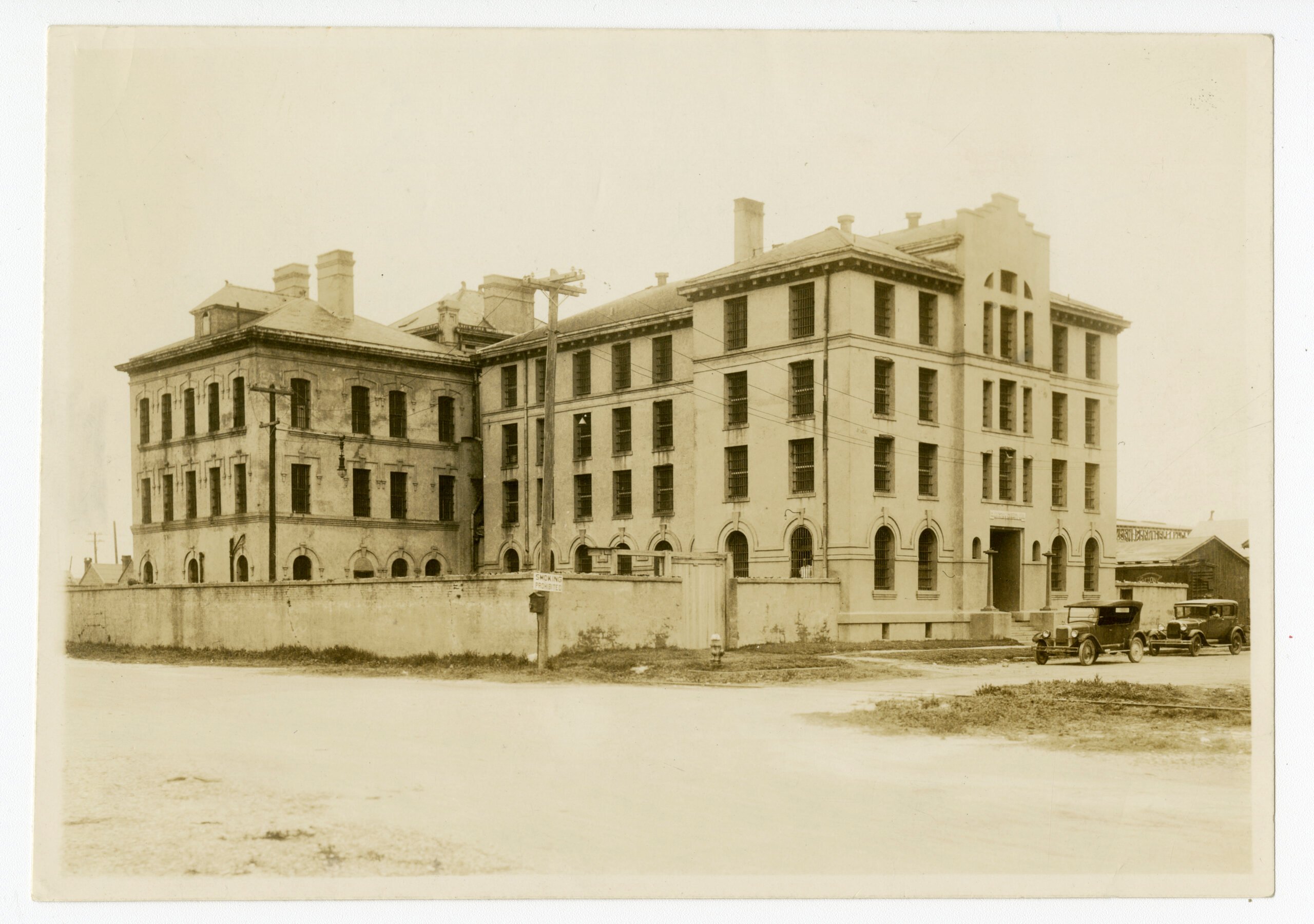Lifestyles of the Rich and Infamous
Bryan Burrough’s new book, The Big Rich: The Rise and Fall of the Greatest Texas Oil Fortunes, covers almost a century of Texas oil, and the players who prospered and failed in its pursuit.
For those with an interest in contemporary Texas history this is a must-read; indeed, its reach stretches well beyond Texas. The oil rich of Texas loomed large on the national horizon, and there was a time that if they pawed the earth, politicians trembled.
We all know the names of the core players-H.L. Hunt, Sid Richardson, Clint Murchison and Hugh Roy Cullen-but Burrough’s research adds a fascinating wealth of detail not seen elsewhere, and conjures lesser players Diamond Jim West, George Strake, John Mecom and the flamboyant Glenn McCarthy as well.
There’s a lot of meat here. Spindletop, outside Beaumont, began gushing in 1901, and thus began the Texas oil industry. The impact was immediate: So much oil was produced so quickly that the price fell to 3 cents a barrel. Concurrently, the Santa Fe railway went from one oil-fired locomotive in 1901 to 227 in 1905.
Texas’ Big Four began their careers in the 1920s. Cullen was from Houston; Richardson and Murchison were childhood friends from Athens, Texas; and H.L. Hunt, a professional gambler, entered the oil game in Arkansas.
Throughout the 1920s and 1930s wells were drilled all over the state as the wildcatters gravitated from east Texas toward the west. Oil towns boomed and ebbed in places like Mexia, Ranger and Kermit. The Big Four were everywhere, and through pluck and luck and constant infusions of capital, they managed by the end of the 1930s to control an enormous number of producing wells.

World War II transformed most things, including the oil business in Texas. At the outbreak of the war, 90 percent of Texas oil reached east coast refineries by tanker. In the first six months of the war, “Nazi subs sank 171 ships between Florida and New York, another 62 in the Gulf of Mexico.” The result was the 1942-1943 construction of the Big Inch pipeline from East Texas to New Jersey.
“The Allies, it was said, ëfloated to victory on a sea of oil,'” Burrough writes, “and by and large it was Texas Oil, a good deal of it owned by the Big Four families. Between 1941 and 1945 the Axis powers produced an estimated 276 million barrels; in the same time span, Texas produced more than 500 million, 100 million from Hunt’s East Texas fields alone.”
So it was that by the end of World War II, the Texas oilmen had become “big rich,” and extreme wealth was no longer the sole province of the Eastern Seaboard. With that wealth came increasingly extravagant behavior. They bought ranches, haciendas and islands, and built mansions in Dallas and Houston. Of greater import was their involvement in right-wing politics.
In 1944, infuriated by Franklin D. Roosevelt’s presidency (including wartime caps on oil prices), conservative Texas Democrats made an unsuccessful attempt to take over the state party. Failing that, they formed a third party, the Texas Regulars, “whose membership was dominated by independent oilmen like Maco Stewart Jr. and Arch Rowan of Fort Worth. The Regulars mounted an elaborately financed anti-Roosevelt campaign … the message was broadly anti-labor and anti-government-and openly white supremacist. One of the party’s planks actually called for ërestoration of the supremacy of the white race.'” Needless to say the Regulars were trounced by Roosevelt.
(For me, it was a shock to see the name Maco Stewart in this list. The next generation of Stewarts were a different breed, and a later Maco became a liberal legislator from Galveston in the late 1950s and a champion of equal rights.)
From the author’s point of view, “one of the most important … legacies of Texas Oil has been its contribution to the growth of right-wing policies and politicians, especially in their most radical guises … the state’s oil millionaires would channel tens of millions of dollars into new conservative causes, bankrolling everything from mainstream Republican think tanks to Senator Joe McCarthy’s red-baiting campaigns of the 1950’s to extremist groups that openly espoused racism and anti-Semitism; later, oil money helped bankroll the rise of the religious right.”
One of the biographical oddities explored by Burrough is the relatively low profile-given their influence-these Texas rebels enjoyed. “In the first years after World War II, H.L. Hunt, Roy Cullen, Sid Richardson, and Clint Murchison had emerged as a handful of the richest men in America,” but no one really knew it, Burrough writes. The anonymity began to come to an end in 1948 with an issue of Life magazine picturing H.L. Hunt as potentially the richest man in America. Shortly thereafter, books such as John Bainbridge’s The Super Americans portrayed the outlandish behavior of these new-money millionaires, who did not fare well in media caricatures of “funny, silly, harmless Texans who rode ostriches, wooed Hollywood stars, and scattered silver dollars on the sidewalks of Houston and Dallas like so much pocket lint.”
Unfortunately, as Burrough demonstrates, the Big Four were a great deal more dangerous than that.
Of the Big Four, it appears that Cullen was initially most politically active. He was the prime moneybags behind “Pappy” Lee O’Daniel, who was a lapdog to the Texas oil industry. Cullen gave money widely to conservative candidates and even funded an opponent to Sam Rayburn at one point. In 1950 he, along with partner Jack Porter, drew up a list of every congressman in a re-election battle, identified those he felt were insufficiently tough on creeping socialism, and began mailing checks to their opponents.
Sid Richardson was the most reclusive of all. He formed an early relationship with presidential son Elliott Roosevelt, providing the Texan a certain White House entrée. In 1951 he became heavily involved in the draft-Eisenhower movement, ultimately teaming with Eisenhower’s close friend George Allen to press the general to run. They confronted Eisenhower with letters from Billy Graham and Clint Murchison urging Eisenhower’s candidacy. We can’t know what influence their persuasions had, but it was during their visit that Ike announced his intention to run.
During the McCarthy era, Richardson was quoted as saying, “I don’t see how I could be friendly with Sam Rayburn and Lyndon Johnson and be friendly with Joe McCarthy too,” but Murchison and Hunt embraced McCarthy enthusiastically. In 1950 McCarthy raised $10,000 from Murchison to help defeat Senator Millard Tydings of Maryland, an early McCarthy critic. Murchison kicked in another $10,000 in 1952 to defeat another McCarthy enemy and began “placing his personal planes at McCarthy’s disposal.” In 1951 Murchison built a resort, the Hotel Del Charro, in La Jolla, California, which became a favored watering hole for many political figures, including McCarthy, who one night in a drunken fit pushed Murchison’s fully clothed wife into the swimming pool. It was J. Edgar Hoover who most enjoyed Del Charro and Murchison’s hospitality, first coming to stay in 1952 and returning every summer until his death in 1972.
Hunt was so taken with McCarthy that in 1952 he hired three former McCarthy assistants to take charge of his Facts Forum foundation. In short order, Facts Forum was producing “two syndicated radio shows and three television shows,” all programmed with right-wing propaganda, and became an integral part of the Hunt political agenda.
On a personal note, I lived in Dallas as a young lawyer in late 1950s and 1960s and railed against the reactionary Dallas Morning News. I was shocked to learn that E.M. Dealey, the publisher, called Hunt a “latent fascist” and said that Facts Forum reminded him “of the Ku Klux Klan.” How true.
There is plenty more to be found in these pages: details of H.L. Hunt’s two bigamous marriages, the rise and fall of Glenn McCarthy and Houston’s Shamrock Hotel, the emergence of a generation of spoiled rich children of Texas’ original oil fortunes. There are detailed descriptions of the antics of Bunker and Herbert Hunt in their attempt to corner the world silver market and their later indictment on federal wiretapping charges. Burrough chronicles the rise and fall of Clint Murchison Jr., from his pinnacle as owner of the Dallas Cowboys to the collapse of his empire in bankruptcy. Even the staid Cullens found themselves embroiled with Italian adventurer Ricky di Portanova and suffered scandals as a result. Only Richardson, who had no children, was spared a legacy of off-the-wall behavior.
I had a friend in Dallas who taught philosophy at SMU. He was wont to argue that Texas politics would change once the offspring of H.L. Hunt received the same quality education as the offspring of John D. Rockefeller. His optimism has not been richly rewarded.
Dave Richards is an attorney and author.


